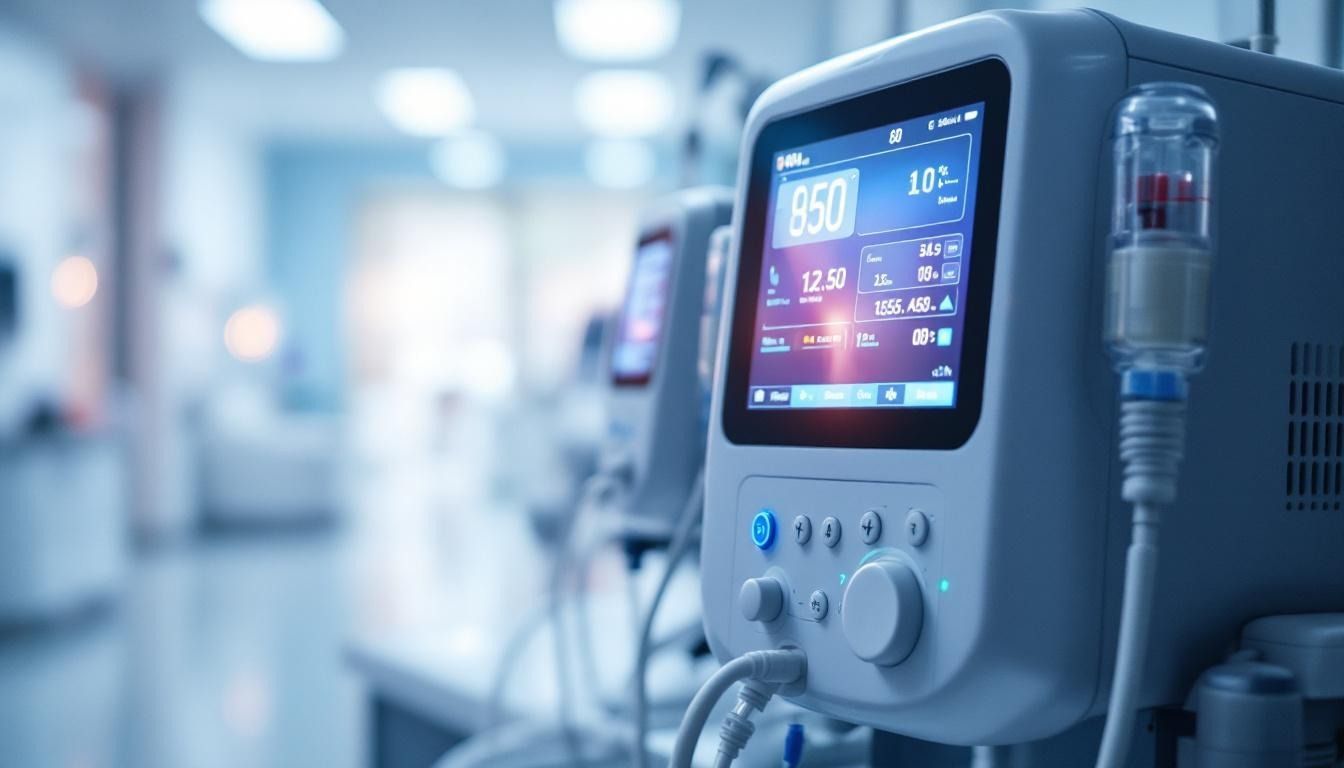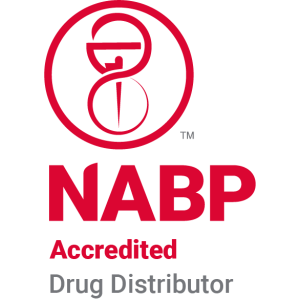Risks and Complications of IPN Therapy
Introduction to IPN Therapy and Its Clinical Context
Intraperitoneal nutrition (IPN) therapy is a specialized form of nutritional support utilized primarily in dialysis patients who experience difficulties meeting their nutritional needs through conventional dietary intake. This therapy involves administering amino acids and other nutrients directly into the peritoneal cavity, thereby compensating for the nutrient losses caused by dialysis procedures. While IPN offers significant benefits in managing malnutrition and improving patient outcomes, it also presents various risks and potential complications that necessitate careful monitoring and management.
Risks and Complications in Dialysis Access and Their Impact on Nutritional Therapies
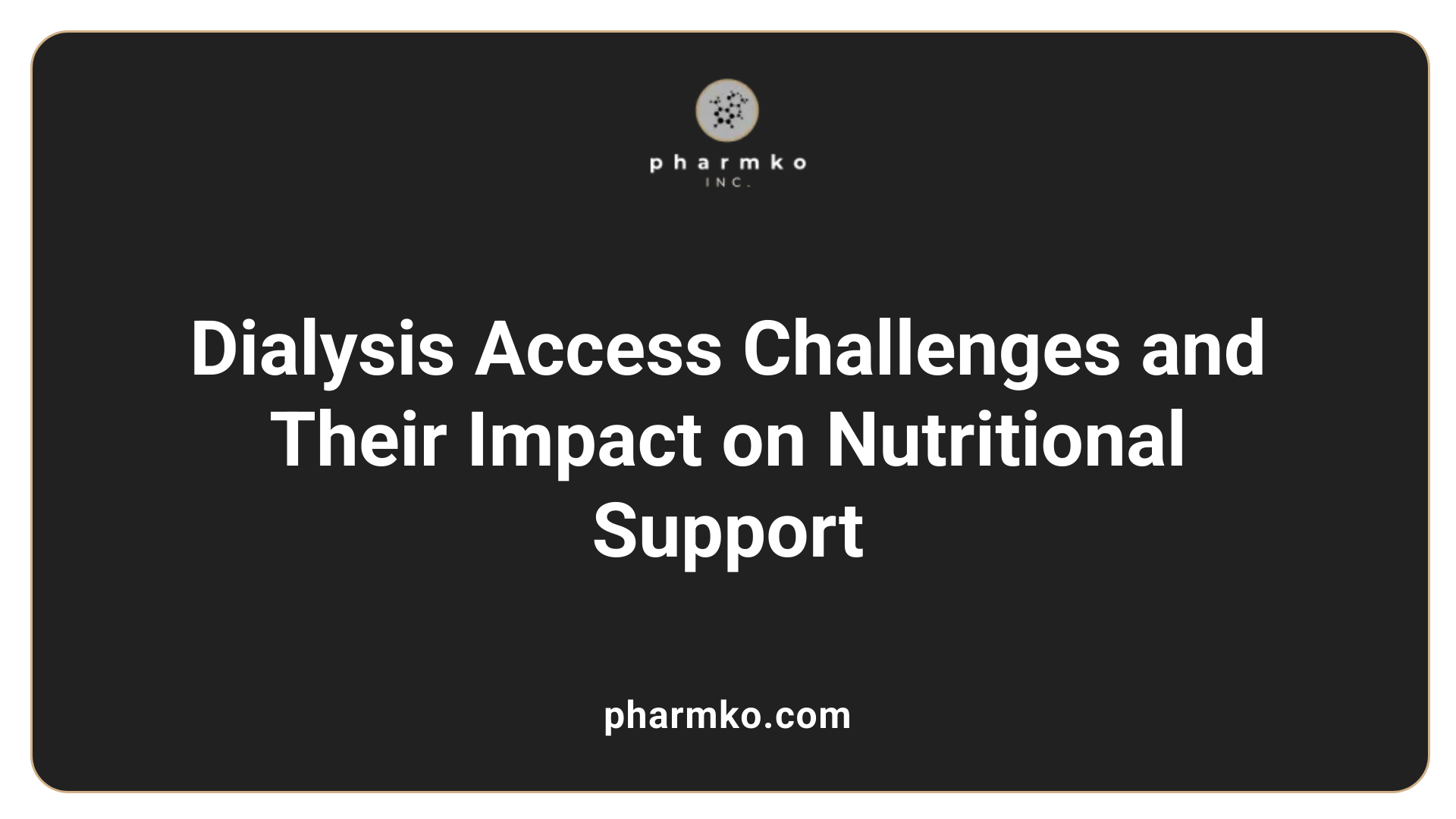
What are the complications associated with dialysis access?
Dialysis access complications are a significant concern for patients undergoing long-term dialysis, especially when administering nutritional therapies like IPN and IDPN. These complications primarily include infections, thrombosis, and stenosis.
Infections are among the most common issues, often linked to indwelling catheters. These infections can lead to biofilm formation and make management challenging. Pathogens such as Staphylococcus aureus frequently cause these infections, which can severely impair access function and increase the risk of systemic infection.
Thrombosis and stenosis are leading causes of access failure. Thrombosis involves blood clots forming within the access circuit, blocking blood flow. Stenosis refers to narrowing of the blood vessels, which hampers the effectiveness of dialysis and can cause swelling or other circulatory problems. Factors like patient conditions, for instance diabetes mellitus, can influence the development of these issues.
Additional access-related problems include pseudoaneurysm formation, venous hypertension, arterial steal syndrome (which deprives tissues of adequate blood flow), and high-output cardiac failure due to large fistulas. Frequent use or repeated manipulations of the access sites increase the risk of damage, which may require interventions such as repairs or even access abandonment.
How do these complications affect nutritional support?
Access failures can significantly impact the delivery of nutritional therapies. For therapies like IPN or IDPN, a well-functioning access, particularly in vascular or peritoneal routes, is essential for safe and effective infusion. When access problems occur, it can delay or prevent the administration of these therapies.
Moreover, infection-related complications can lead to systemic illness, reducing the patient's overall nutritional status and ability to tolerate therapies. In cases where access failure results in hospitalization or procedure-related delays, the risk of worsening malnutrition increases.
Why is managing access issues crucial?
Proper management of dialysis access-related problems is vital to maintaining the integrity of nutritional therapies. Early detection of complications allows for timely interventions, preventing escalation into more severe problems that could compromise patient health.
Strategies include rigorous infection control measures, careful monitoring for signs of thrombosis or stenosis, and timely repairs or revisions of access points. Ensuring the access site remains open, functional, and free of infections supports uninterrupted nutritional support, which is crucial for combating malnutrition and improving overall outcomes in dialysis patients.
Common Complications During Hemodialysis and Their Relevance to Nutritional Interventions

What are the common complications observed during hemodialysis treatments?
Hemodialysis patients often face several complications during their sessions. One of the most frequent issues is intradialytic hypotension, which leads to symptoms like dizziness, nausea, and muscle cramps. These symptoms can make it challenging to administer nutritional therapies such as Intradialytic Parenteral Nutrition (IDPN) safely.
In addition to hypotension, patients may experience nausea, vomiting, headaches, and leg cramps, which can further hinder nutritional support efforts. Although less common, more serious complications include cardiac arrhythmias, air embolism, bleeding from access sites, and dialysis disequilibrium syndrome, a condition characterized by brain swelling caused by rapid fluid shifts.
Electrolyte imbalances, especially hyperkalemia, are also significant concerns as they can dramatically affect heart rhythm and overall health. These disturbances can interfere with metabolic functions and complicate nutritional management.
Overall, these complications can compromise patient stability during dialysis, raising the need for vigilant clinical monitoring. Ensuring patient safety is especially important when delivering therapies like IPN, which require stable hemodynamics for optimal absorption and effect. Managing these risks effectively helps maintain nutritional status and reduces hospitalization risks linked to malnutrition and electrolyte derangements.
Medical and Safety Concerns of IPN and Parenteral Nutrition in Dialysis Patients
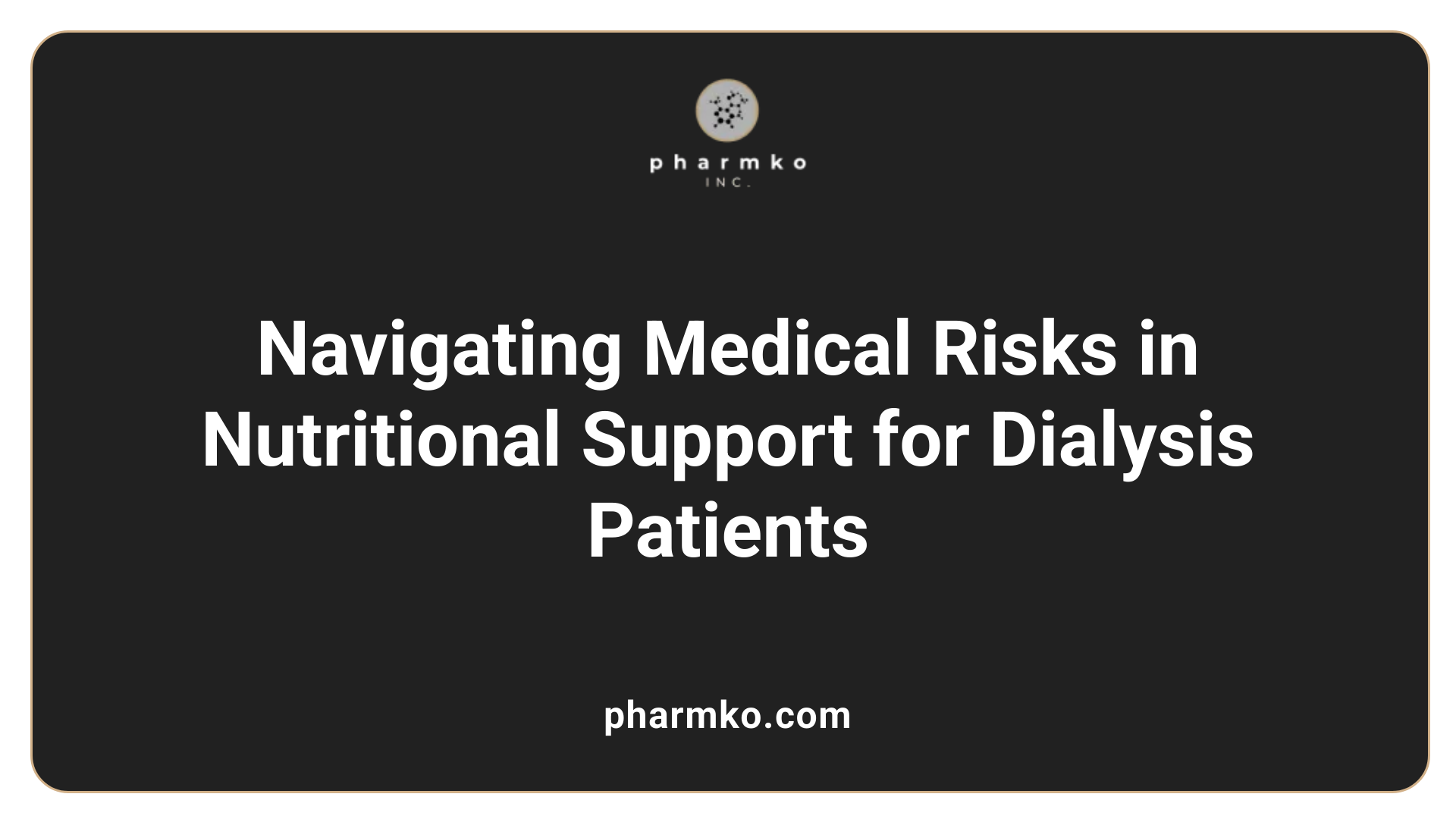
What are the general medical concerns and health risks associated with IPN therapy in dialysis and nutritional treatments?
IPN (Intermittent Peritoneal Nutrition) and parenteral nutrition (PN) are vital interventions for dialysis patients who cannot meet their nutritional needs through diet alone. However, these therapies carry some health risks that require careful management.
One primary concern is the increased risk of infections related to the use of catheters and invasive procedures. Because these treatments often involve the insertion of central lines or catheters, there is a heightened chance of bloodstream infections such as catheter-related bloodstream infections (CLABSI). These infections can be severe and pose significant health threats if not promptly treated.
Metabolic disturbances are another important consideration. Common issues include hyperkalemia (high potassium levels), hyperphosphatemia (high phosphate levels), and potential vitamin toxicities, especially if nutrient supplementation is not carefully individualized and monitored. These imbalances can lead to complications like arrhythmias, bone disease, and other metabolic problems.
Furthermore, improper nutritional management can lead to undernutrition, worsening muscle wasting and immune function, or overnutrition, which may lead to obesity, cardiovascular problems, and metabolic syndrome. Both scenarios increase patient morbidity and mortality.
To mitigate these risks, strict adherence to aseptic techniques during catheter placement and maintenance is essential. Regular monitoring of blood chemistries and nutritional markers helps to catch and correct imbalances early. Personalized treatment plans, including adjusted nutrient formulas and vigilant infection control measures, are crucial for safe and effective therapy.
In summary, while IPN and PN are beneficial for addressing the nutritional deficits in dialysis patients, awareness of and vigilance against these potential health risks are vital for optimizing patient outcomes and safety.
Risks and Safety Profiles of Intraperitoneal and Parenteral Nutrition Therapies

What are the potential adverse effects and safety concerns of intradialytic and parenteral nutrition therapies?
Both intradialytic parenteral nutrition (IDPN) and intraperitoneal nutrition (IPN) are valuable options for managing malnutrition in dialysis patients. However, their use comes with certain safety considerations that must be carefully managed.
One primary concern involves infections. IDPN, which is administered through the venous circuit during dialysis sessions, carries a risk of bloodstream infections (BSIs), including catheter-related bloodstream infections. Similarly, IPN involves introducing nutrients directly into the peritoneal cavity; improper technique or contamination can lead to peritonitis, a serious infection of the peritoneal membrane.
Mechanical complications are also noteworthy. For IPN, increased intra-abdominal pressure may cause hernias, especially if the therapy is prolonged or not carefully monitored. Other mechanical issues might include catheter malposition or leakage.
Metabolic disturbances are common risks associated with these therapies. IDPN solutions contain glucose, amino acids, and lipids, which, if not tailored correctly, can lead to hyperglycemia, particularly in diabetic patients. Fluid overload is another concern, especially if infusion rates are too rapid or if the patient’s cardiac function is compromised.
In addition, hypersensitivity reactions or intolerance to components like lipids or trace elements can occur. Such adverse effects necessitate close monitoring of clinical signs and laboratory parameters.
Effective management strategies involve the use of sterile techniques during preparation and administration to mitigate infection risks. Personalizing nutrient formulas based on individual patient needs and continuously monitoring laboratory data—such as blood glucose, electrolyte levels, and infection markers—are crucial.
Overall, preventing complications hinges on meticulous care, continuous assessment, and timely adjustments to therapy, ensuring that the nutritional benefits outweigh the potential safety concerns.
Adverse Effects and Risks of IPN Therapy in Specific Conditions, and Use of Phycocyanin
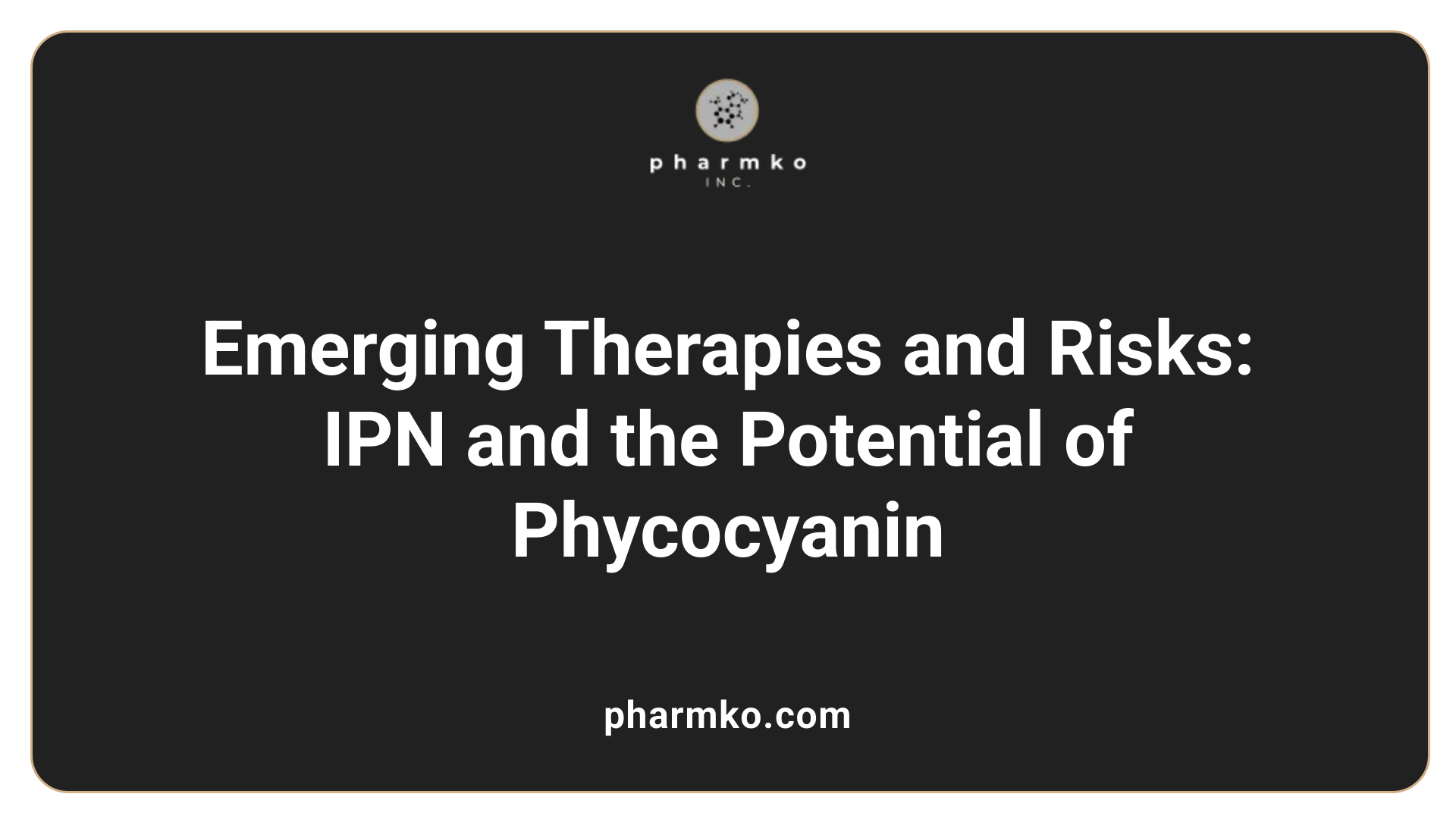 Treating complex conditions such as malnutrition and interstitial pneumonia (IPn) with Intraperitoneal Nutrition (IPN) involves careful consideration of potential risks and adverse outcomes. IPN is a nutritional therapy that adds protein directly into the peritoneal cavity to counteract nutrient losses in dialysis patients. However, improper management can increase the risk of complications.
Treating complex conditions such as malnutrition and interstitial pneumonia (IPn) with Intraperitoneal Nutrition (IPN) involves careful consideration of potential risks and adverse outcomes. IPN is a nutritional therapy that adds protein directly into the peritoneal cavity to counteract nutrient losses in dialysis patients. However, improper management can increase the risk of complications.
One primary concern is the potential for worsened infections. Since IPN involves peritoneal access, there is an inherent risk of introducing pathogens, leading to peritonitis or systemic infections. Patients with poor immune function or existing infections are particularly vulnerable.
Metabolic disturbances are another significant issue. Overadministration of amino acids or inadequate formulation adjustments can cause issues like hyperglycemia, dehydration, electrolyte imbalances, or fluid overload. Such disturbances not only diminish the therapy's effectiveness but can also worsen patient outcomes.
Malnutrition itself, common in conditions such as interstitial lung disease, is associated with higher mortality rates. Research indicates that unoptimized nutritional support can fail to improve clinical status or even exacerbate systemic inflammation.
Ensuring safety requires personalized formulation based on individual lab markers like serum albumin, inflammatory scores such as MIS, and kidney and liver function tests. Vigilant monitoring during therapy is critical for early detection and management of adverse effects.
Emerging therapies like spirulina and its active molecule, C-phycocyanin, are under study for their potential kidney-protective properties. C-phycocyanin has shown promising results in delaying kidney damage and reducing hypertension in animal models, owing to its antioxidant capabilities. These findings suggest possible future supportive therapies.
However, safety profiles must be rigorously evaluated before widespread use. Consistency in dosing, quality control during extraction, and confirming no contamination are essential to prevent adverse reactions. While they hold potential, further clinical research is required to establish their safety and efficacy fully.
Balancing Risks and Benefits in IPN Therapy
While IPN therapy remains a valuable tool for managing malnutrition in dialysis patients, it necessitates a comprehensive understanding of its inherent risks and potential complications. Proper patient selection, meticulous monitoring, strict adherence to aseptic techniques, and individualized treatment plans are vital to minimizing adverse outcomes. Advances in research, including studies on supplements like spirulina and C-phycocyanin, offer promising avenues for enhancing safety and efficacy. Ultimately, multidisciplinary approaches that incorporate vigilant risk management will ensure that IPN therapy continues to benefit patients while safeguarding their health.
References
- IDPN/IPN - Pentec Health
- Intradialytic Parenteral Nutrition and Intraperitoneal Nutrition
- Intradialytic parenteral nutrition for patients on hemodialysis
- Complications - Total Parenteral Nutrition - Stanford Health Care
- IDPN & IPN Nutrition Therapy for Dialysis Patients, What's the ...
- Risk factors for interstitial pneumonia following bone marrow ...
- A Lifeline for Dialysis Patients - Patient Care America
- [PDF] THRIVE.







